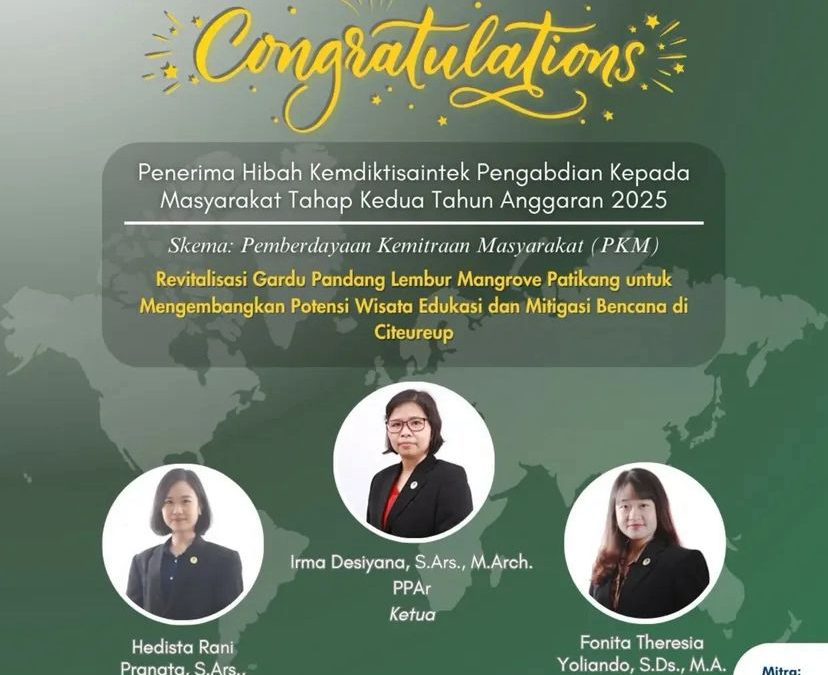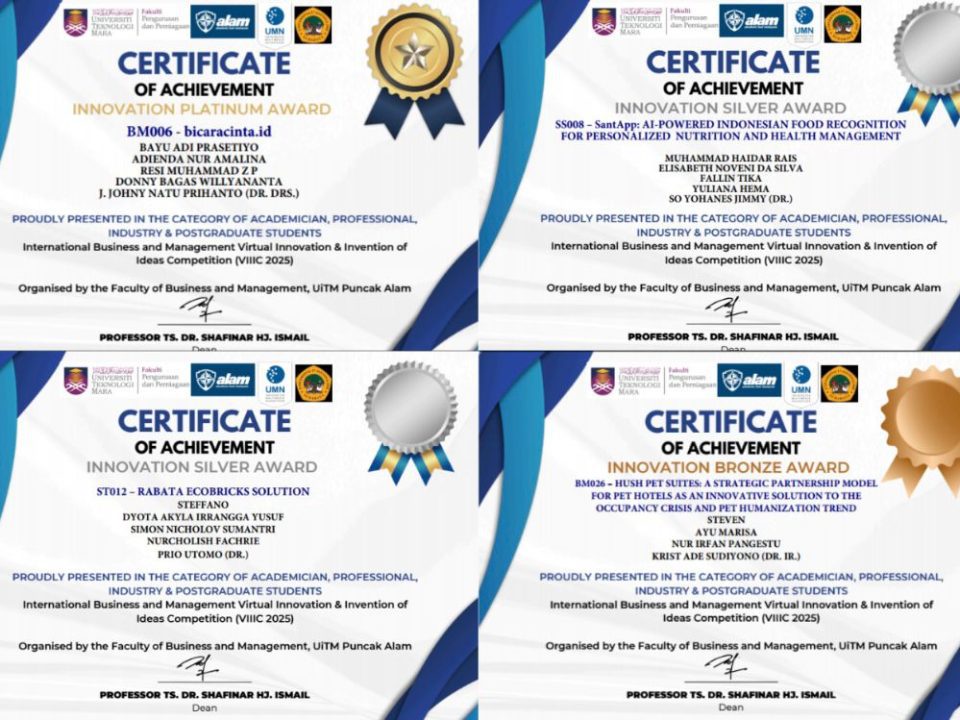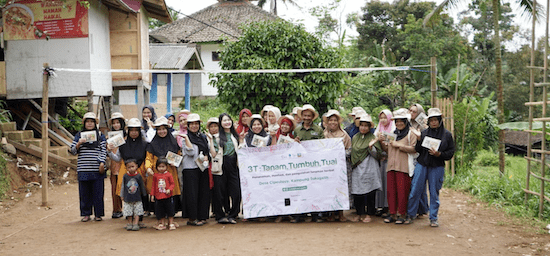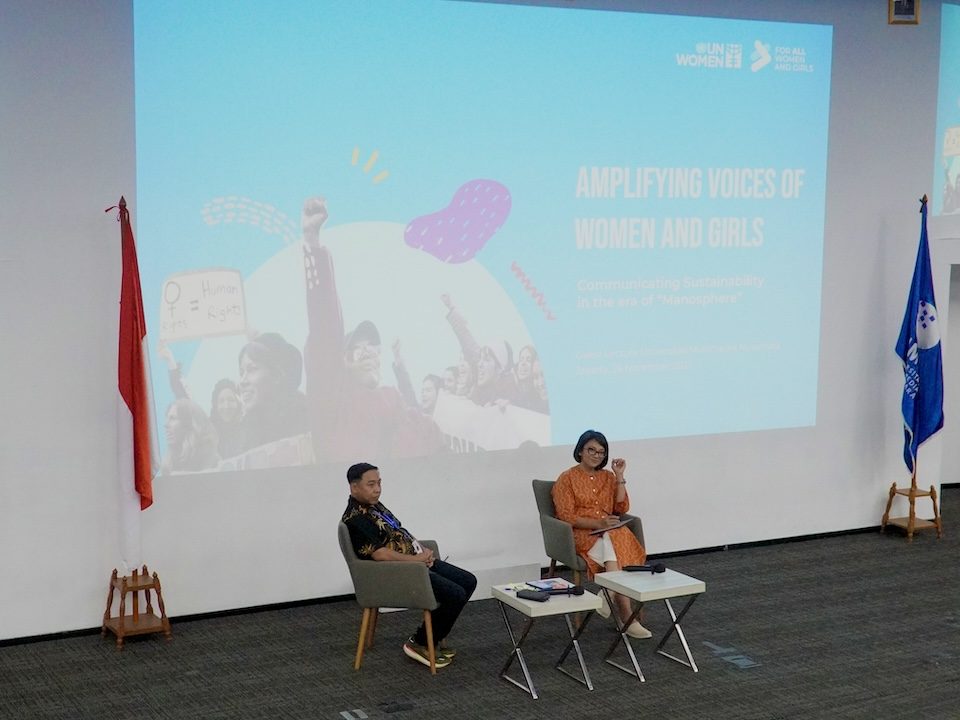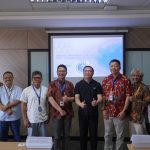
UMN Conducts Public Lecture on China’s Economic Transformation Toward Becoming a Leading Industrial Economic Power
September 1, 2025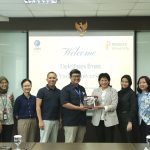
UMN Opens Opportunities for Collaboration with Pradita University
September 12, 2025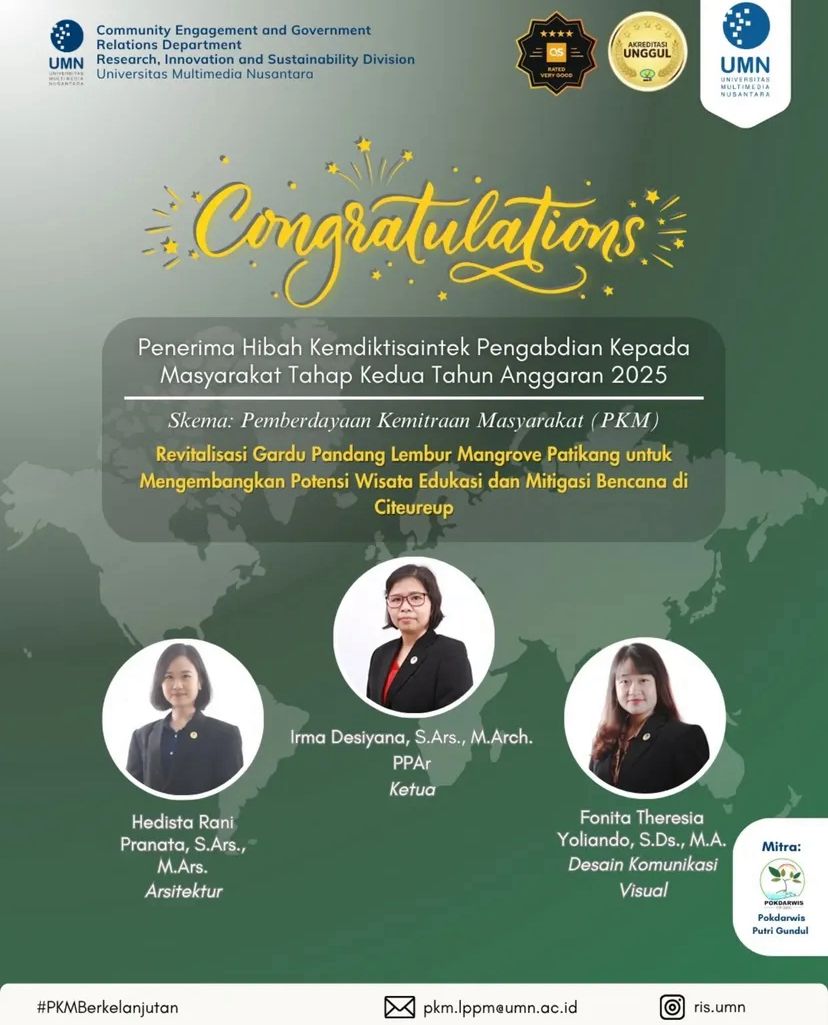
Penerima PKM hibah pengabdian masyarakat 2025 (Dok. RIS UMN)
TANGERANG – A team of Universitas Multimedia Nusantara (UMN) lecturers from the Faculty of Arts & Design successfully received the 2nd phase of the 2025 Ministry of Research, Technology, and Higher Education Community Service grant with the title “Revitalisasi Gardu Pandang Lembur Mangrove Patikang untuk Mengembangkan Potensi Wisata Edukasi dan Mitigasi Bencana di Citeureup” (Revitalization of the Lembur Mangrove Patikang Observation Tower to Develop Educational Tourism and Disaster Mitigation Potential in Citeureup).
The lecturer team consists of Irma Desiyana, S.Ars., M.Arch. PPAr, Architecture Lecturer and Leader of the project, Hedista Rani Pranata, S.Ars., M.Ars., Head of the Architecture Study Program, and Fonita Theresia Yoliando, S.Ds., M.A., Head of the Visual Communication Design (VCD) Study Program. We interviewed Hedista to get an insight into their project.
“To be honest, we had mixed feelings because we didn’t make it through batch 1, so we had given up hope of receiving this grant. But thanks to the encouragement and support from RIS UMN, we made it through batch 2,” Hedista shared, when asked about the team’s reactions to obtaining the grant.
About The Grant
Hedista explained that this grant is about revitalizing the observation tower in Lembur Mangrove Patikang to develop educational tourism and disaster mitigation potential using a participatory design approach. This grant is important to increase visitor or tourist numbers and enthusiasm, automatically boosting the wider community’s economy (e.g., MSMEs, Mothers Family Welfare Empowerment, etc.) as a tourism support system.
“Our team comprises lecturers and students from the Architecture and VCD programs. Our architecture colleagues will focus on developing the observation deck design, while our colleagues at VCD will focus on developing interactive information/educational boards. This synergy is very exciting, and we hope to make a real difference in the community,” Hedista said.
Project Background
Lembur Mangrove Patikang is a conservation area in Patikang Village, Citeureup Village, Panimbang District, Pandeglang Regency. This area is a mangrove forest and swamp covering an area of approximately 4 hectares.
In addition to being a conservation area, the local community also depends on fishing and mangrove-based product processing, such as beverages and food. Lembur Mangrove Patikang also serves as a center for producing mangrove seedlings for the Pandeglang Regency area.
Hedista explained that over the past 3 to 4 years, partners have managed and carried out:
- Mangrove conservation and rehabilitation involve planting new seedlings and maintaining the ecosystem to ensure sustainability.
- Environmental education for the community and visitors, including training on the benefits of mangrove ecosystems.
- Community-based ecotourism includes educational tours of mangrove ecosystems and activities that sustainably utilize mangrove products.
- Partnerships with various parties, including schools, companies, and local governments, to support area management.
“The idea to revitalize the observation tower came from the community. When our team visited, we were shown the condition of the bird-watching area, which had collapsed. This caught our attention and prompted us to investigate further,” Hedista said.
When asked about the current mangrove condition, Hedista shared that the observation tower in Lembur Mangrove Patikang is quite concerning, as it has collapsed due to its weak structure and rotten wood. Additionally, unlike typical observation decks, the existing observation deck was merely a standard platform (not elevated).
“Therefore, our team came to propose the revitalization of this observation deck, so that it not only serves its basic function but also promotes educational tourism and even disaster mitigation,” she shared.
How Education and Disaster Mitigation Can Be Integrated Into Tourism Development
Hedista explained that the Patikang Mangrove Forest area is rich in biodiversity and is home to various types of terrestrial and marine fauna, such as various types of crabs, snakes, insects, birds, fish, porifera, and shrimp.
Therefore, the team plans to build a three-level observation deck and add interactive information and education boards to introduce the flora and fauna species that can be observed from the deck. In addition, they also plan to add binoculars to enhance the experience of observing flora and fauna.
“What makes it even more special is that we are taking a participatory design approach with the community. This way, the community can have a greater sense of belonging to this facility,” Hedista said.
Lembur Mangrove Patikang is very close to the sea, making it highly vulnerable to tidal fluctuations. This observation deck can serve as a means to observe and anticipate the possibility of tidal flooding (monitoring rising sea levels/tidal conditions).
Additionally, because its elevation is designed to be flood-free (approximately 50 cm above the highest tidal flood level), it can serve as an alternative light vertical evacuation point. The elevated position of this observation deck also allows for regular monitoring of the mangrove ecosystem.
The project’s effect can also last beyond the project timeline. Hedista said they also collaborated with PT Chandra Asri, who donated access to the road leading to the observation deck area. This area could be developed in the future by adding more trails or other tourist attractions.
Mangrove Conservation is Vital for Climate Change Mitigation
“In my opinion, the main focus of mangrove conservation and preservation is to maintain the balance of the ecosystem. This area must continue to function as a natural protector against coastal erosion, reduce the impact of large waves, and at the same time be an important bastion in climate change mitigation due to its ability to absorb more carbon than terrestrial ecosystems,” Hedista said.
The mangrove forests also provide habitats for many species of flora and fauna. In this context, ecotourism or educational tourism can be complementary and motivating, as long as they do not deviate from the main objective: preserving sustainability.
“Local communities are also at the forefront of conservation. Because they live side by side with mangroves every day, they know best what their needs and potential are. Therefore, they must play the biggest role in every decision-making process,” Hedista added.
The team hopes that revitalizing this observation tower can be the beginning of many sustainable steps. If nature, communities, academics, and industry can work together, we will preserve mangroves and foster new hope for educational tourism, disaster mitigation, and community welfare.
“Now is the time for us to move forward together,” Hedista said, closing our interview.
By Levina Chrestella Theodora | UMN News Service
English translation by Levina Chrestella Theodora
Kuliah di Jakarta untuk jurusan program studi Informatika| Sistem Informasi | Teknik Komputer | Teknik Elektro | Teknik Fisika | Akuntansi | Manajemen| Komunikasi Strategis | Jurnalistik | Desain Komunikasi Visual | Film dan Animasi | Arsitektur | D3 Perhotelan , di Universitas Multimedia Nusantara.

